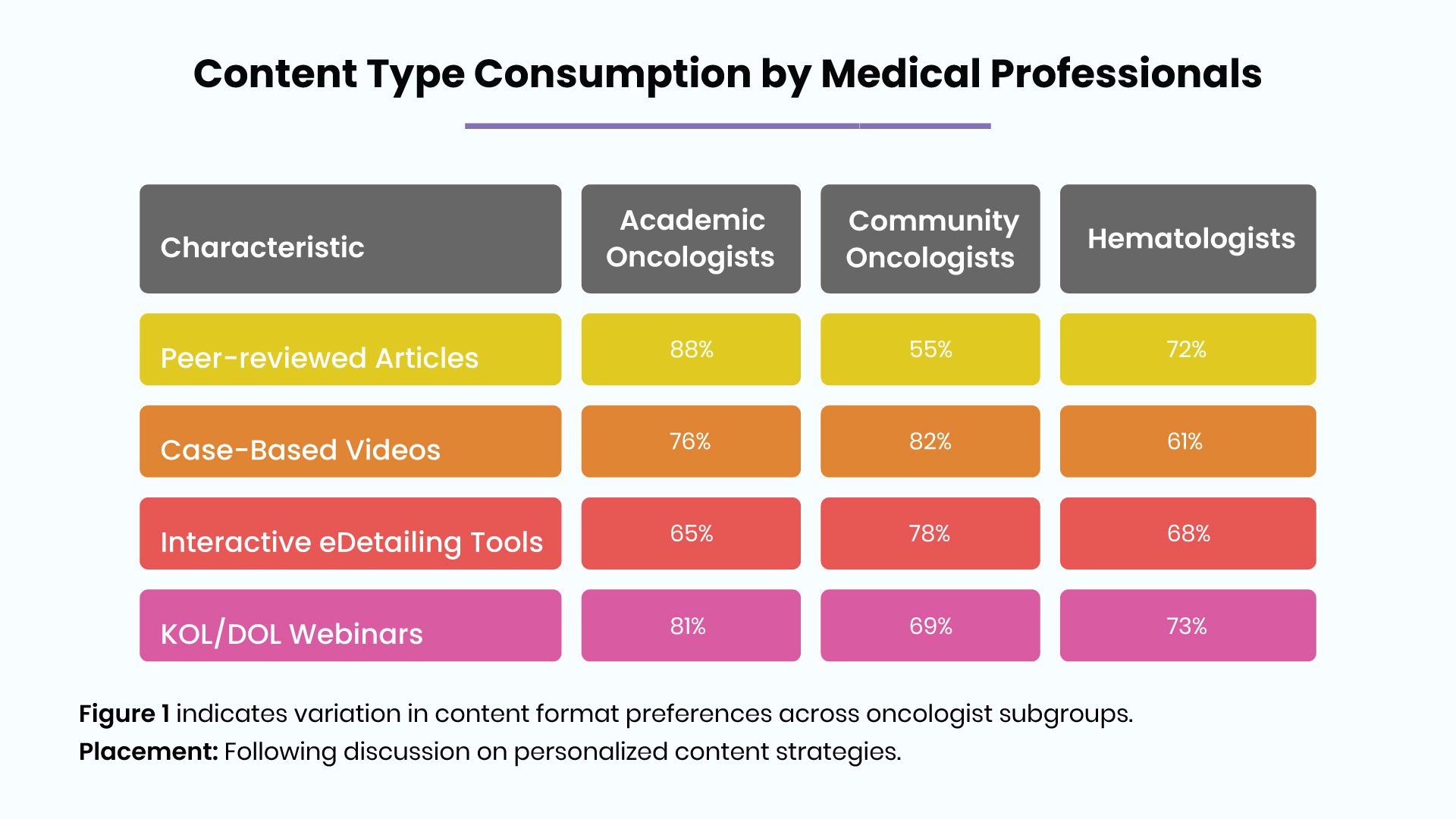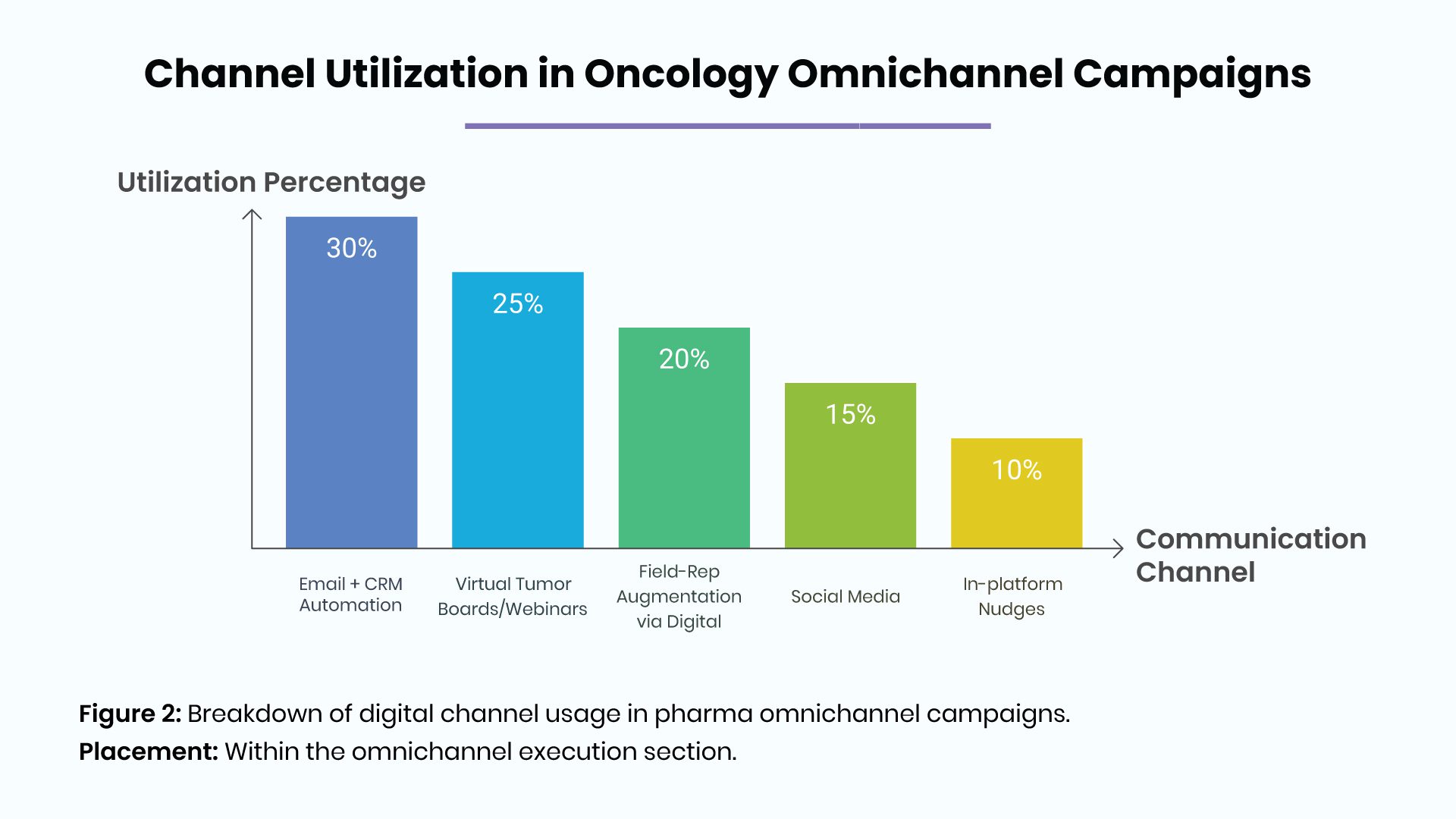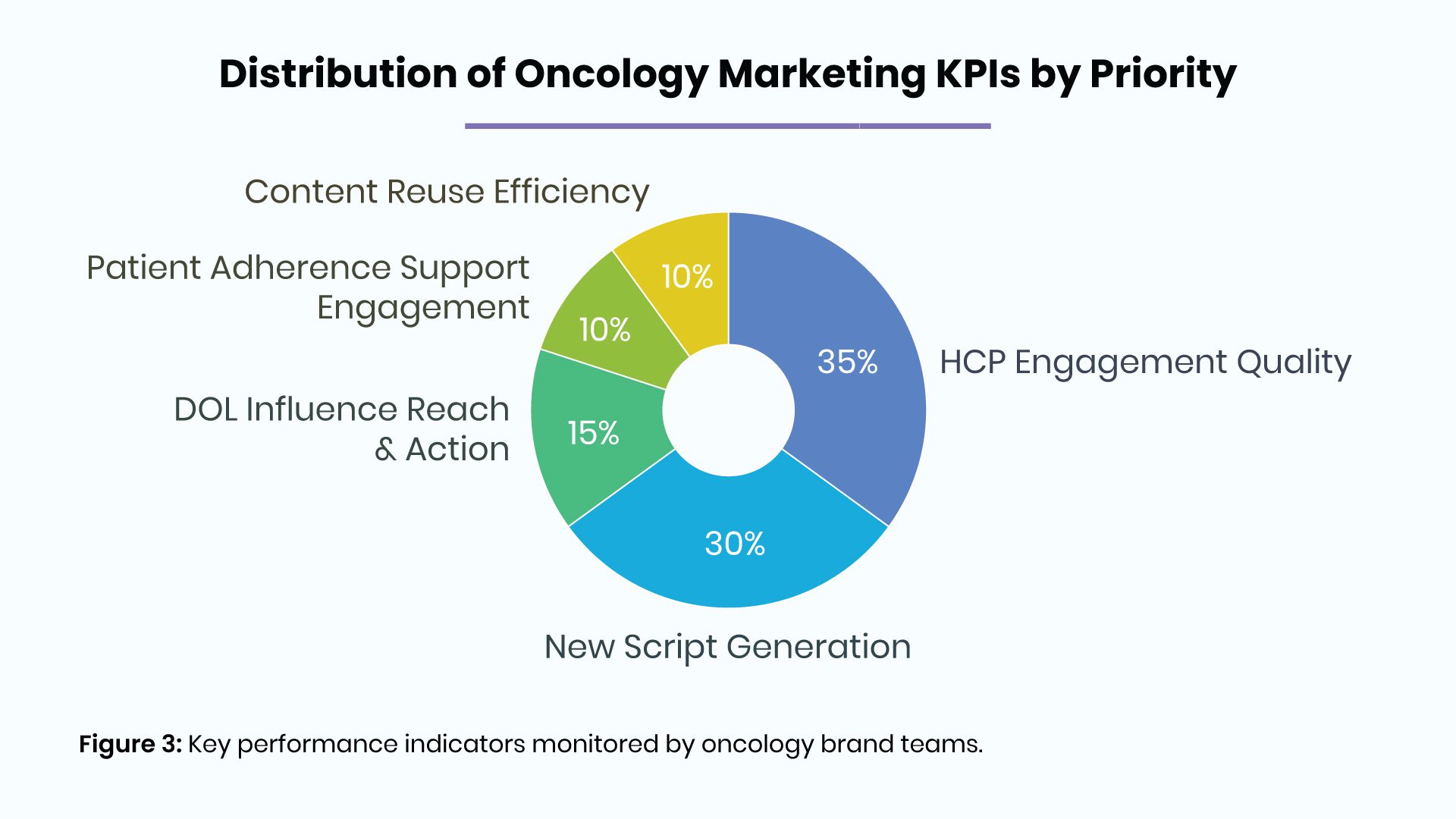Introduction
The oncology pharmaceutical landscape is evolving rapidly in response to technological innovation, regulatory pressure, and the rising expectations of healthcare professionals (HCPs) and patients alike. From AI-augmented segmentation to patient journey optimization and digital advocacy, pharma marketers are rethinking how they reach, educate, and support oncologists in the era of precision medicine.
This article explores the next wave of oncology pharma marketing: how personalized omnichannel outreach, intelligent automation, digital opinion leader (DOL) engagement, and deep patient experience design can converge to create measurable, compliant, and clinically meaningful outcomes.
1. Rethinking the HCP Journey: Oncology-Specific Personalization at Scale
The traditional approach of segmenting oncologists by geography or seniority is rapidly being replaced with dynamic, data-driven profiling that enables contextual, hyper-personalized communication. In oncology, where decision-making is highly nuanced, such personalization is not a luxury it is a necessity.
Key Data Inputs for Precision Targeting:
- Specialty-specific behavior (e.g., hematology vs. immuno-oncology)
- Clinical trial participation and publication history
- EHR prescription patterns
- Engagement with prior digital content
Omnichannel Execution:
- Dynamic CRM sequences based on specialty
- Triggered email campaigns post-CME or conference
Customised digital detailing based on content interaction history

2. Strategic Role of Digital Opinion Leaders (DOLs) in Oncology Influence Mapping
KOLs (key opinion leaders) remain critical, especially in academic settings. However, the rise of digital channels has empowered a new generation of clinician DOLs who drive influence via platforms like LinkedIn, ResearchGate, Twitter/X, and even closed platforms like Sermo.
DOLs differ from traditional KOLs in:
- Platform reach (webinars, blogs, video panels)
- Frequency of publishing
- Peer engagement (comments, reposts, Q&A)
Effective DOL Marketing Tactics:
- Co-developing case studies and interactive webinars
- Leveraging micro-content for social amplification
- Deploying insights via owned digital ecosystems (e.g., disease-specific microsites)
A key advantage is the authenticity and peer-level trust they foster, crucial in oncology, where clinical validation is everything.
Segment Spotlight: Rising Influence of Mid-Career DOLs
While senior KOLs often anchor large-scale scientific exchange, mid-career digital opinion leaders, typically oncologists in the 35–50 age range, are emerging as the most dynamic digital influencers. They are:
- More responsive to new evidence and digital formats
- Often engaged in early-phase trials or registries
- Willing to co-create bite-sized, sharable insights
Pharma marketers can harness this segment by
- Offering micro-grants or research dissemination support
- Co-creating carousel content, Instagram Reels, or X (Twitter) threads explaining trial readouts
- Enabling them to host “ask-me-anything”-style sessions in verified closed communities
3. The New Era of AI-Augmented Engagement: Predictive and Prescriptive Intelligence
AI is not just automating tasks it’s transforming strategic decision-making in pharma marketing. Especially in oncology, where the stakes are high, AI models are used to determine whom to engage, when, how, and with what message.
Examples of AI Application:
- Predicting which oncologists are likely to adopt a new therapy within 90 days
- Recommending the optimal time/channel mix for a given oncologist
- Monitoring behavior changes post-data releases or competitor launches
Use Case: AI-Suggested Peer Content Matching
When Dr. X engages with a webinar on immunotherapy updates, the AI recommends follow-up content like a DOL-led tumor board discussion on treatment resistance mechanisms, tailored to her previous engagement behavior.
Takeda Oncology: AI-Powered Next-Best-Action for Sales Teams
A partnership between Takeda Oncology and ZS produced an AI-powered analytics application that integrates real-world patient data with individual oncologist profiles. By clustering micro-patient populations based on treatment history and timing, the model dynamically recommends the next best engagement, whether a detailed piece of peer-reviewed content, a DOL webinar, or a personalized messaging sequence. According to ZS, the tool reduced planning time and has significantly enhanced the confidence and contextual relevance of field conversations
Hidoc’s Real-World Data Campaign: Personalized Case Studies
A recent industry pilot working with Hidoc utilized AI to curate and personalize case study campaigns by analyzing EHRs, prescribing trends, and behavioral engagement indicators. The impact was measurable: a 61% rise in oncologists requesting detailed case data, a 26% spike in new patient starts (via IQVIA Rx audits), and a 53% increase in time spent engaging with content demonstrating how AI-tailored evidence elevates clinical interest and intent.
Optimizerx: EHR-Triggered Patient Identification at Point of Care
Optimizerx introduced an AI-based algorithm within the EHR workflow to flag “brand-eligible” oncology patients precisely when a therapy change was indicated. The system prioritized oncologists based on these alerts and delivered targeted communications at the point of care. This real-time integration reportedly led to earlier therapy initiation and more efficient field messaging.
Memora Health: AI-Enabled Oral Therapy Adherence
Moving beyond HCP engagement, Memora Health deployed AI-driven SMS and digital care pathways to support adherence for oncology patients on oral therapies. While specific outcomes weren’t shared publicly, their model piloted across cancer centers leveraged timely reminders and symptom monitoring to proactively reduce treatment discontinuation.
Common Success Drivers
These case studies reveal a recurring set of best practices:
- Data-rich platforms: Combining real-world data (EHRs, prescribing records, behavior signals) enables precision stratification and messaging.
- Timely POC integration: Embedding AI at decision moments EHR-triggered recommendations or field-action prompts amplify clinical relevance.
- Content personalization: Automating the curation and delivery of tailored evidence (e.g. case studies, peer-awarded webinars) increases engagement and tangible outcomes.
- Iterative model refinement: Systems that incorporate feedback loops and ongoing data validation continue to improve performance over time.
Barriers and Lessons Learned
Despite these successes, challenges remain:
- Data quality risks: In oncology, AI models depend heavily on validated, peer-reviewed datasets. Models trained on preprints or non-peer-reviewed literature may compromise quality.
- Workflow friction: Integrating AI into EHRs and field rep systems is technically challenging and requires strong vendor and IT partnerships.
- Environmental and regulatory overhead: AI models demand ongoing validation, audits, and resource investments, a factor often underappreciated outside of development teams.
- Human oversight: Even sophisticated models require continuous human input, whether through MSL feedback, compliance checks, or clinical review, to function effectively and responsibly.
Strategies for Adoption
To leverage AI-driven oncology engagement successfully, consider these evidence-led tactics:
- Pilot narrow workflows: Begin with small-scale EHR integration or field-support tools before scaling AI across the enterprise.
- Prioritize data governance: Ensure all model inputs are clinically validated, MLR-approved, and privacy-compliant under frameworks like GDPR and HIPAA.
- Blend AI with field teams: Treat AI as an augmentor, not a replacement for MSLs and field reps. Equip them with model outputs and train them on interpreting AI prompts.
- Embed feedback loops: Regularly review AI performance, incorporate real-world feedback from reps and clinicians, and adjust models month-over-month.
4. Seamless Omnichannel: Where Data, Timing, and Message Collide
In oncology, omnichannel strategies must consider both volume and relevance. The goal is to orchestrate seamless journeys across platforms-email, webinars, field interactions, and social media-while maintaining message integrity and compliance.
Channels in Focus:
- Email journeys tailored by subspecialty
- Virtual tumor boards for interactive CME
- In-platform content nudges during eDetailing
- Socially targeted DOL insights on platform-specific disease hashtags

5. Oncology Patient Pathways: Pharma as a Companion in the Care Continuum
In oncology, the patient journey is long, fragmented, and emotionally taxing. Pharma can create impact beyond the molecule by offering supportive digital solutions that guide patients from diagnosis to survivorship.
Strategic Components:
- Pre-Treatment Onboarding: Branded microsites explaining treatment steps and timelines
- Active Treatment Support: Telehealth integrations, symptom trackers, reminder apps
- Post-Treatment Navigation: Nutritional advice, survivorship care planning, support group locators
DTP (direct-to-patient) platforms like PfizerforAll and Roche’s MyPath can drive adherence and deepen brand equity when executed transparently and compliantly.
6. Compliance Frameworks for the AI-Digital Era
With great innovation comes increased oversight. Pharma companies must maintain rigorous compliance, especially when automating HCP journeys, collecting data, or engaging patients directly.
Key Guardrails:
- Consent-first data policies (GDPR, HIPAA)
- AI models trained on MLR-approved messages only
- Real-time audits of HCP journey data
- Transparency tagging for any influencer/DOL-related content
By embedding compliance-by-design principles into tech stacks and processes, pharma firms can innovate responsibly.
7. Measuring What Matters: From Awareness to Action
True ROI in oncology marketing cannot stop at open rates. It must map to real-world metrics like Rx starts, therapy switches, and quality-of-care markers.
Modern Measurement Models:
- Multi-touch attribution: Mapping interactions across time and channel
- Rx lift correlation: Associating exposure to high-engagement content with prescription volume
- Influencer spread tracking: Monitoring reach and action tied to DOL activity

8. The Power of Modular Content and AI-Driven Tagging
As asset volumes grow exponentially, AI-enabled tagging and modular reuse are essential. Pharma teams must quickly adapt content across geographies, channels, and therapeutic contexts all under MLR control.
Benefits of Intelligent Modular Content Systems:
- 50–60% faster campaign launches via pre-approved content blocks
- Up to 300% increase in reuse rates of digital content
- Automated compliance tracking via content tags and metadata
Platforms like Viseven, IQVIA’s Orchestrated Content, and Aprimo AI Tagging are driving this transformation in leading oncology marketing teams.
9. Predictive ROI Modelling for Oncology Budgets
Beyond traditional MMM (marketing mix modeling), predictive ROI frameworks offer a dynamic lens into which channels and tactics will yield the highest return before a dollar is spent.
What It Looks Like in Practice:
- Predicting ROI of adding virtual tumor boards pre-launch
- Simulating budget shifts between KOL webinars and DOL video series
- Quantifying incremental profit from early adoption of new eDetailing formats
By integrating historical campaign data, CRM logs, market share trends, and third-party data feeds, predictive models empower real-time reallocation and optimization.
10. NBA (Next Best Action): Making Every Interaction Count
Next Best Action (NBA) technology uses machine learning to prescribe the optimal next engagement for every HCP. NBA doesn’t just recommend; it coordinates across teams and platforms, ensuring precision.
Oncology-Specific Benefits:
- AI identifies newly prescribing HCPs and recommends field rep visits or DOL content
- Dynamically triggers follow-ups based on CME attendance or peer content interactions
- Reduces drop-offs by orchestrating timely and contextual messages across the journey
With NBA, brand teams can double the effectiveness of each touchpoint without overwhelming physicians.
Conclusion
Pharma marketing in oncology has evolved into a discipline of precision. Where once reach and frequency dominated, today relevance, timing, personalization, and authenticity reign. The convergence of AI, digital advocacy, patient-centricity, and omnichannel strategy offers pharma teams the opportunity to elevate their brands not merely as products but as partners in oncology care.
By integrating DOL influence, intelligent automation, predictive modeling, and human-centered design, oncology marketers can navigate this new era with both impact and integrity.
Key Takeaways
· Map HCP journeys using AI-powered profiling and behavioral segmentation
· Collaborate with DOLs to amplify message authenticity and peer trust
· Orchestrate omnichannel journeys with compliance-baked personalization
· Invest in modular, auto-tagged content ecosystems for agility
· Use predictive ROI modeling to optimize budgets pre-launch
· Employ NBA to turn data into dynamic, high-ROI engagement strategies
· Always center on the patient, from symptom onset to survivorship



